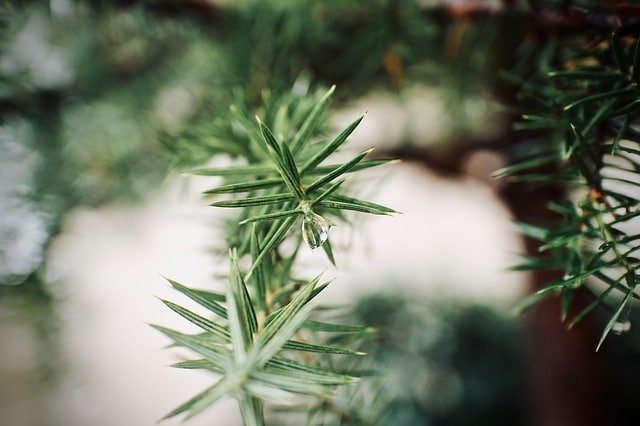It may feel cold outside, but that doesn’t mean your plants are less susceptible to the effects of the sun. If you notice browning or rusting on your evergreens, the culprit might just be winter burn. The damage is caused by dehydrated plant tissues and, even though it is called “burn,” it occurs during winter when temperatures are frigid. Luckily, there are ways you can guard the plants and trees in your landscape. Let’s find out if your plants are protected against winter burn.
What is winter burn?
When plants gather energy from the sun, they release water as part of the photosynthesis processes. This results in the evaporation of moisture through the leaves and needles of the plant or tree. When a plant is not able to replace the lost water due to drought or frozen ground, they will dehydrate and begin to lose foliage or, in severe cases, die. This is what is called winter burn.
How is it identified?
Winter burn shows up on evergreens as brown to red, dry foliage or needles. Broad-leafed evergreens such as boxwoods, hollies, and rhododendrons often show the most damage because they have more exposed leaf area than evergreens with thin needles. Some or all of the foliage may be affected, with areas on the sunny side most severely damaged. This is because the sun’s rays intensify the photosynthetic activity and cause more water loss.
How do you protect your plants?
There is very little you can do to treat burned plants, so the best strategy is prevention.
First and foremost, it is important to water adequately during the rest of the year (about 1 inch per week so it saturates to the depth of 12 to 18 inches). Watering needs to be continued through late autumn and into early winter as long as the ground is not frozen. Mulch can also help by preserving the much-needed moisture in the root zone.
If winter burn does occur, the majority of plants will not be severely injured. However, they may need a little help getting healthy again. Once the soil begins to thaw, you can help damaged shrubs recover by watering them well. Branches that do not recover might be dead and should be pruned. Pines, spruces, and firs typically produce new growth at branch tips in spring that will replace winter burn-damaged needles, so pruning may not be required on these evergreens.
If you suspect your trees and shrubs may be suffering from winter burn or you just want a professional opinion, please contact us and we will come out and evaluate the situation and make a recommendation on how to move forward.


